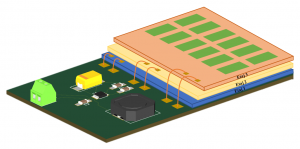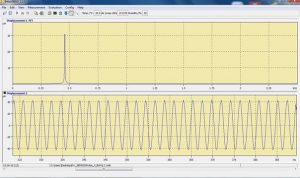The specifications of the piezoelectric microsystem for energy harvesting were defined during 2018. They include: 385 Hz resonant frequency, total area below 1cm2, PZT used as the piezoelectric material and the design of a structure that is using the flexure transversal d31 vibration mode.
Also, two different options of the energy harvesters were designed: one rectangular silicon cantilever (2,500 µm long, 300 µm wide, and 10 µm thick) with a silicon inertial mass and one spiralled rectangular cantilever (equivalent length: 21.6 mm and 300 µm wide). 10 cantilevers were grouped in an array of 2×5 pieces, to increase the power density.
The technological design was performed, by designing the geometries and defining the technological fabrication steps, as well as designing the electronic blocks for energy management and storage.
The deposition methods of the piezoelectric material was defined and developed, including PLD and serigraphic techniques.
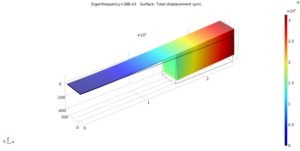
Rectangular cantilever with cu inertial mass (simulation)
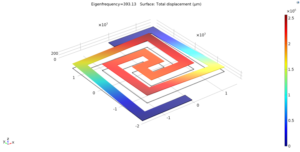
Spiralled rectangular cantilever (simulation)
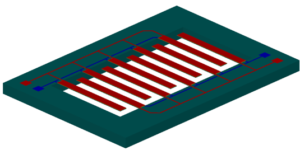
The cantilevers connection diagram
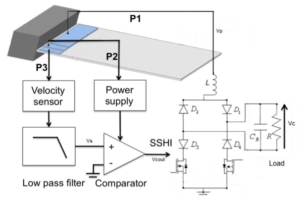
Block diagram of the electronic module for the energy management and storage



